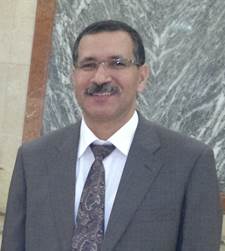Population of the Sultanate of Oman: Its Growth and Distribution
The study shows that there existed a disparity characterizing the annual growth rate of population in the Omani Sultanate, swinging off between increase and decrease. The first population census (1993) showed that the economic, social and political conditions through which the Sultanate had passed were the shaping forces behind such a disparity. The study also shows that the image of the distribution of population has radically changed, especially after the discovery of petroleum. While the geographic determinism (topography, climate, and water resources) affected such a distribution in the past, the growth of controlling human factors (roads, public services and investments) are affecting the distribution in the present.
The study aims at defining the value rate of the annual growth of population to trace and expect its future trends. It also aims at identifying the controlling natural and human factors which affect the distribution of the Omani population.
The study mainly depends on the analysis of the data included in the censuses of 1993 and 2003, as well as international, regional and local statistical sources. Moreover, it depends on the present researcher_s field studies conducted between 2006 and 2008.
The study has come up with the following findings. First, the growth rate of population has not been stable for a long time, since it passed through many stages: slow growth up to 1965 because of internal domestic conditions; rapid growth between 1965 and 1993 after the discovery of petroleum, and slow growth again between 1993 and 2003 due to the development in public services and the improvement of the standard of living. It may even increase in the future because of the increasing population and the increase in the numbers of foreign laborers.
Second, it shows that controlling natural and human factors have determined the patterns of population and its areas of concentration. The coast plains and the capital area are the most densely populated; the valleys and mountain oases are reasonably populated, while the middle parts of the Sultanate and the internal part of the Governorate of Dhofar are the least densely populated.
Third, it further shows that over 70% of the population lives in urban areas, and that about one third of the population, mostly Indian and Asian laborers, some of them live in isolated areas.
Fourth, the study shows that the decrease of fertility rate is likely to affect the growth of Omani population in the future. One of the expected scenarios – the most pessimistic – is that the population number will reach 5.56 million in 2050, and that the number of population under 15 will decrease, forming only 16% of the total population. The study finally shows that the number of the middle-aged (15-64) is expected to increase up to 69% according to the same scenario.




